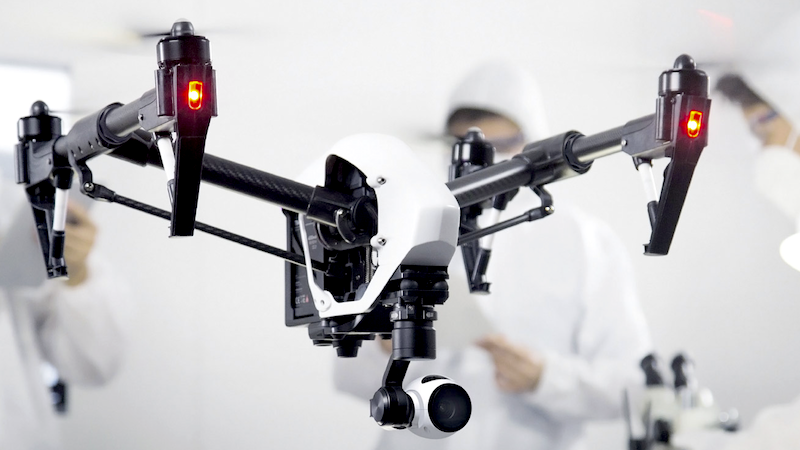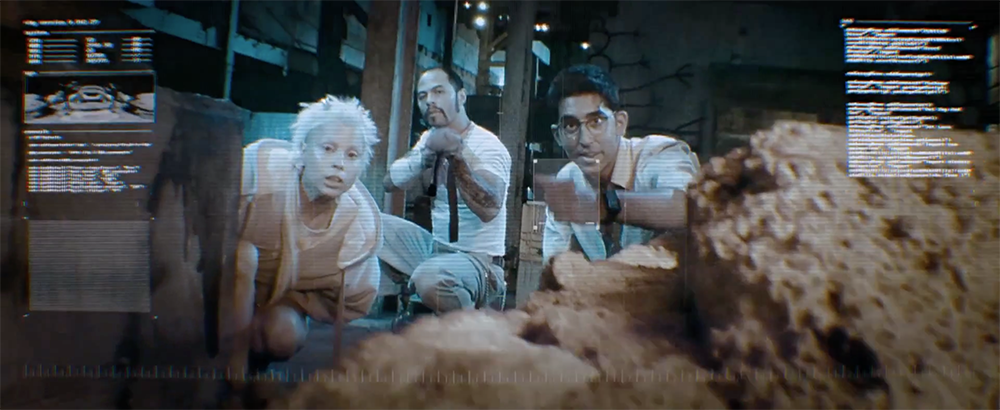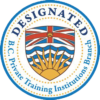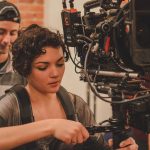
Drones, aka Unmanned Aerial Vehicles (UAV) or Unmanned Aerial Systems (UAS), are an increasingly integral part of film. Filmmakers are exploring the possibilities of this new, game changing technology and shooting scenes in ways never done before.
As film gear has gotten lighter, more compact, and more sophisticated, filming with drones has become, not only feasible, but often the right tool for the job. More than that, the tech has become more accessible to filmmakers of all levels, breeding new perspectives and dynamism from diverse sources.
This is a huge deal for the indie film community, where money and resources are often tight. Even our own InFocus Film School students have used drones in their student films!
SO WHAT’S SO GOOD ABOUT DRONES?
- More Affordable
Off the bat, drones are considerably cheaper than using helicopters or cranes. While helicopters can cost you thousands of dollars, the price for a drone and crew can start around a few hundred, depending on the size and weight of the gear. In fact, here’s a list of budget drones if you’d like to get one yourself.
- Safer
Since helicopters are manned, in the case of an accident, it’s inevitable that someone will get hurt. Their size, weight, and components also mean the clean up is a big, costly undertaking. Drones, on the other hand, are unmanned and small. This means the impact of an accident is greatly reduced, and usually the only clean up is throwing out the pieces.
- Saves Time
Stressing out about the production schedule? Drones reduce the amount of setup time needed. While setting up a shot with a helicopter can take hours, setting up one with a drone can be done in a matter of minutes.
- More Flexible
Their compact size allows drones to fit into tight spaces and film from a fresh, difficult perspective with ease. They’re also great at filming an uninterrupted shot with multiple views. You could shoot a scene that begins indoors and then swoops outside–up into the sky–without a single cut.
Their small size and noise also mean they create smaller shadows, less air disturbance, and can fly lower than helicopters.
AN UNEXPECTED EXAMPLE

Chappie (2015) by Neill Blomkamp used drones in various, distinct ways. In one instance, the movie follows a robot character’s POV as he flies through a window. A scene like that is impossible with a helicopter. It can be done on a cable cam, but it wouldn’t give the same organic feeling captured in the scene. Chappie also used drones without cameras as a point of reference for actors dealing with a CGI character that isn’t really there.
You can find out more in this interview with Chappie Drone Operator John Gore, from The Credits.
DRONE SAFETY AND REGULATIONS
Drones may be safer than helicopters, but you still need to worry about safety. Injuries have happened (though mostly involving hobbyists)–including Enrique Iglesias, who may have injured his hand permanently from reaching for one and slicing his fingers on the rotors. With drones still so new, we still have yet to see the full extent of risks and legislations.
If you want to use drones in your own films, here are some things you need to know:
Transport Canada regulates the use of drones (UAV/UAS) and the penalty for misuse can include $25,000 fines and/or jail time. The consequences are so severe because the potential to do harm is enormous: you can put aircraft at risk, endanger lives and property, trespass and violate privacy.
The legal and safety requirements of using drones in filmmaking depend on your proximity to airports and populated areas. A Special Flight Operations Certificate is typically required (with a few exemptions) and the operator must abide by specific conditions. This determines usage times, maximum altitudes, minimum distances from people and property, and will coordinate with air traffic services in the area. Remember to allow plenty of time to make the application and secure the certificate–they are processed first-come-first-served and can take up to 20 days!
Indoor use, extreme weather and radio interference can also adversely affect the flying characteristics of the drone, so cleared flight paths and perimeters must be established and adhered to. Crew and cast must be notified of the use of the drone (the ACTSafe Bulletin is typically attached to the Call Sheet) and a clearly defined safety meeting must be held in advance of drone use. (See #5 – Safety Meetings)
References for the Bulletin and regulations:
ACTSafeBC – UAS (Drone) Safety Bulletin
Transport Canada – Rules for the safe use of Drones
Though drones have been creating tension arising from safety, legislation, and the opinions of filmmakers on the usage of drones, no one can deny their place in film. Drones are reshaping the way filmmakers see the world and they’re here to stay.





